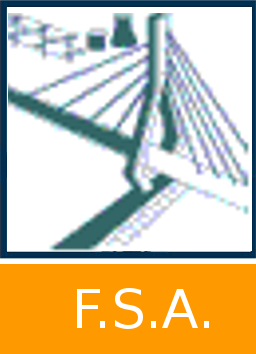Adelere, Oluwafemi Ayuba 
Promotor(s) : Sekulski, Zbigniew
Date of defense : 2014 • Permalink : http://hdl.handle.net/2268.2/6135
Details
| Title : | Structural design of a multi-role support offshore vessel of 100m long |
| Author : | Adelere, Oluwafemi Ayuba 
|
| Date of defense : | 2014 |
| Advisor(s) : | Sekulski, Zbigniew |
| Committee's member(s) : | Boote, Dario |
| Language : | English |
| Number of pages : | 95 |
| Discipline(s) : | Engineering, computing & technology > Civil engineering |
| Target public : | Researchers Professionals of domain Student |
| Institution(s) : | Université de Liège, Liège, Belgique |
| Degree: | Master de spécialisation en construction navale |
| Faculty: | Master thesis of the Faculté des Sciences appliquées |
Abstract
[en] Offshore support vessels are in various specialized design, to meet or fulfill specific offshore operations, however the need for just one vessel capable of fulfilling all these specialized function arises in the multi-role offshore support vessels. This work present a structural design of multi-role offshore support vessel capable of operating in the gulf of Guinea, with design Criteria Sea state 4m significant wave height. The design process involves achieving multiple objectives at the same time, while conforming to structural, economic and production constrains. Every step forward needs to be checked by the previous stages to enhance best combination between design requirement in all stages and the final results. The design meets or fulfill multiple operation requirements of wide range of offshore support activities, including diving, survey, cable lay, construction and maintenance support. And also, the requirements of the classification society. Detail analysis of the local loads and stresses on the main deck and tween deck, is carried out using Nauticus 3D beam, a Det Norske Veritas (DNV) finite element software, using the beam theory assumptions, from Marin Teknikk Poland. The design is based on the Det Norske Veritas (DNV) classification rules, with the aid of Nautical hull software, the global scantling is done. However, the local and global loads, stresses are compared with the standard values from the classification society (DNV), and total adherences to the rules are ensured. The regions, joints, nodes of higher stresses are identified and necessary steps are taken to ameliorate these stresses to the confinement of the stated rule values. Furthermore, comparison is made between designed optimized structure and the owner structural or operation requirements, in terms of mass in kilograms. The vessel is constructed all of mild steel, except for the helicopter landing platform deck which is made of aluminum, round bilge hull form, flare bulbs bow, with a large and clear working area on the main deck for the offshore activities.
File(s)
Document(s)

 ADELERE Oluwafemi - ZUT (Jan 2014) Service Vessel.pdf
ADELERE Oluwafemi - ZUT (Jan 2014) Service Vessel.pdf
Description: -
Size: 3.79 MB
Format: Adobe PDF
Cite this master thesis
The University of Liège does not guarantee the scientific quality of these students' works or the accuracy of all the information they contain.


 Master Thesis Online
Master Thesis Online


